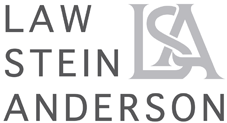Streamline Your Digital Legacy
The Wall Street Journal (Alexandra Samuel) 8/6/24 published an article titled “Why Everyone Needs a ‘Digital Death-Cleaning’ Plan,” in which the author discusses why it’s essential to have a digital death-cleaning plan so that heirs aren’t left with a confusing collection of digital files and accounts they don’t have access to and assets that they can’t locate. She offers four helpful tips on digital cleaning, including labeling files, leaving a guide, considering a possible AI alter ego, and scanning physical files. Let’s explore these helpful tips on streamlining your digital legacy further:

Labeling Files as Relevant, Memorabilia, or DoD
Your survivors need to know which digital files they should keep and which are better off discarded. Organizing each into three categories named “relevant,” “memorabilia,” and “DoD” (delete upon death) is an excellent strategy for keeping things clear for the loved ones.
- Relevant: These files include legal and financial information. Think wills, passwords, banking info, etc. Other relevant files include practical instructions, such as the user manual for the home security system and other noteworthy documents.
- Memorabilia: These are sentimental files such as digital family photos, creative writing, family recipes, genealogy projects, and noteworthy convos between family members that may bring a smile to your loved ones’ faces.
- DoD: These are files that your loved ones should delete upon death that are irrevlevant or private. Journal entries, sensitive emails, and confidential work would all go under this category. Store these on a secure hard drive designated for destruction in your will to ensure privacy.
Explain Your Labelling System
Next, you’ll want to create a document that thoroughly explains your labeling system and the location of the files. In this guide, include digital subscriptions, key contact email addresses, and utilities on paperless billing. Tell a trusted person about the document’s existence, and have a physical copy in a secure but obvious location, like a labeled folder in a filing cabinet.
Consider Training AI with Your Digital Files
Advances in generative AI allow us to leave our digital files for AI use. Imagine having a digital version of yourself to answer questions about family vacations or home organization tips. By archiving blog posts and social media, you can create an AI that provides easy access to your knowledge and memories. If you like this idea, try training an AI with your Facebook posts or emails to see how it works. However, if you dislike the idea, specify in your will that your digital archives shouldn’t be used for AI training.
Digitizing Memories Can Lighten the Load for Your Heirs
By digitizing physical items, such as papers or mementos, you can replace them with files, scans, and digital snapshots, making it easier to share memories with everyone. For example, scanning a collection of postcards allows you to share it with your entire family rather than just one person. Digitizing personal collections, like theater programs, creates an online memory book that you can enjoy and share while your heirs can more easily manage or dispose of the physical items.
For more expert guidance on integrating these digital legacy strategies into your estate planning, contact Law Stein Anderson today.
